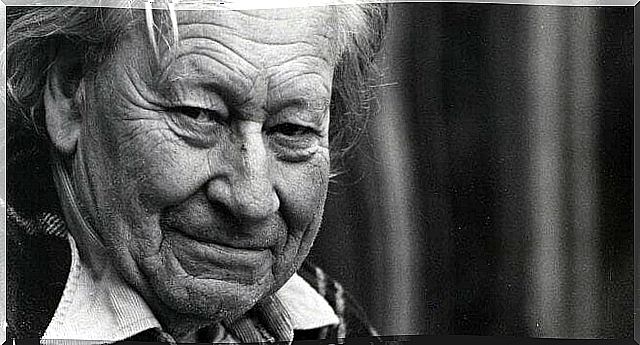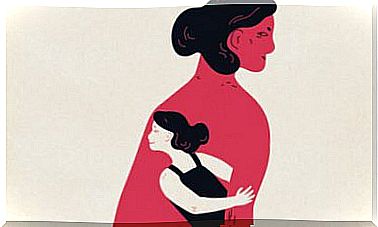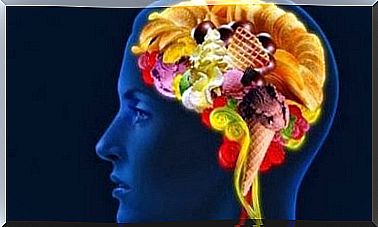Gregory Bateson’s Double Bind Theory

The double bind theory was coined and developed by anthropologist Gregory Bateson and his research team in Palo Alto, California (1956). It is framed in the systemic perspective and refers to those communicative situations in which contradictory messages are received.
This theory was formulated to explain the psychological origin of schizophrenia, leaving aside brain dysfunctions and organic hypotheses. And it is schizophrenia that remains one of the most perplexing mental illnesses. In fact, several theories have been postulated about how it originates, some of an organic or biological nature and others of a social nature. Let’s take a closer look at what the double bind theory consists of.
Brief review on Gregory Bateson
Gregory Bateson was born in Grantchester, United Kingdom, on May 9, 1904. He was an anthropologist, social scientist, linguist, and cybernetician whose work had repercussions in many other intellectual fields. Some of his most notable writings are reflected in his books Steps towards an ecology of the mind (1972), Spirit and nature ( 1979) and The fear of the angels: epistemology of the sacred ( 1987).
Bateson and some of his collaborators such as Jay Haley, Donald Jackson and John Weakland were pioneers in the development of the systems perspective. In fact, he is recognized in academic circles as a cult figure whose appeal includes his obscurity, eccentricity, and diversity of achievement. However, the growing interest in holism, systems, and cybernetics has naturally prompted educators and students to publish their work.
Communication for Bateson was what made human relationships possible, that is, something like their support. From his point of view, this includes all the processes through which one person influences others. From this perspective, the media become a determining component of the social structure that is worth analyzing.
Thus, Bateson said that the double bind that appears sporadically in communication had to be eliminated. He even stated that this phenomenon is constantly seen on television. For example, in one program a moral value is proclaimed and in the other it is violated, which generates conflicts in the mind of the viewer, especially if they are children or people with a low critical sense.

What is a double bind?
According to Bateson, a double bind is a communicative dilemma due to the contradiction between two or more messages. In this way, it does not matter what is done because any choice is a mistake. A communicative situation that causes suffering and can lead to a psychological disorder.
Let’s see it better with an example. A child tries to relate to his mother, who suffers from emotional difficulties. This expresses how much she loves him but at the gestural level, the child only receives signs of rejection. Therefore, the message that the mother expresses verbally does not coincide with the message that her body sends to her child. In this way, he is caught in a contradiction that involves affection and rejection.
Another example would be the famous statement “be spontaneous.” A double message of impossible fulfillment: if the person is not spontaneous, he does not fulfill the mandate, but if he fulfills it, in some way he is also failing to fulfill it because it is not spontaneous as such, since obeying implies non-spontaneity.
The double bind theory
The double bind theory is based on the analysis of communications, and specifically on Russell’s theory of logical types. The so-called “double bind” situation is derived from this theory and from observations made to schizophrenic patients. As we have seen, in this situation, a person, whatever he does, cannot win.
Bateson said that someone imprisoned by the double bind can develop schizophrenic symptoms. The central thesis of the double bind theory is that there is a discontinuity between a class and its members, since the class cannot be a member of itself. Neither can one of the members be the class, since the term used for the class is of a different level of abstraction.
In the pathology of real communications, this discontinuity is continually and inevitably broken. In the same way, a pathology occurs in the human organism when there are certain formal patterns of this break in the communication between mother and child. Thus, this pathology is classified as schizophrenia, a serious mental disorder, of a psychotic type, which causes alterations in thinking and language.

Ingredients necessary to manifest the double bond
The ingredients required for a double bind situation to occur are as follows:
- Two or more people. One of them is the “victim.” The double bind is not supposed to be inflicted only by the mother. It can be done by the mother alone or by some combination of mother, father and / or siblings.
- Repeated experience. The double bind is a recurring theme in the victim’s story. This is not a one-time traumatic experience, but one so repeated that the double bind structure becomes a common expectation.
- A negative primary command. This can take one of two forms: “Don’t do that, or I will punish you” or “If you don’t do that I will punish you.” The learning context is based on the avoidance of punishment and is not a reward-seeking context. The punishment may consist of the withdrawal of love or the expression of hatred or anger. Even more devastating is that it can also consist of the kind of abandonment that results from the expression of the extreme helplessness of the parent.
- A secondary mandate in conflict with the first on a more abstract level reinforced by punishments or signs that herald a danger to survival. The verbalization of the secondary command can take a great variety of forms. For example: “Do not consider this a punishment” or “do not submit to my prohibitions”. There are other examples when the double bind is inflicted by two individuals. For example, one parent may deny the other’s mandate on a more abstract level.
- A negative tertiary injunction that prohibits the victim from escaping the field. It may be unnecessary to classify this mandate as a separate item. If double bindings have been imposed during childhood, it is naturally impossible to escape.
According to the theory of double bind, this complete set of ingredients is no longer necessary when the victim has learned to perceive his universe under double bind patterns. Almost any part of a double bind sequence can be enough to precipitate panic or anger.

The double bind effect
The double bind effect suggests that there will be a collapse in the individual’s ability to discriminate between Logical Types or communication modes every time a double bind situation occurs. This situation has a general characteristics:
- The individual is involved in an intense relationship. He feels that in the relationship it is very important to accurately discriminate what kind of message is being communicated to him.
- The individual is trapped in a situation in which the other people who intervene express two orders of messages and one of them denies the other.
- The person is unable to comment on the messages that are expressed to correct their discrimination of the order of messages to which they have to respond. That is, it cannot formulate a metacommunicative enunciation.
Bateson’s double bind theory has not been robust as an explanation for the cause of schizophrenia, but it has highlighted the importance of communication and family patterns in mental health. Although the double bind hypothesis has become obsolete in this regard, it has been decisive for the evolution of systemic therapy.
Bibliographic references









